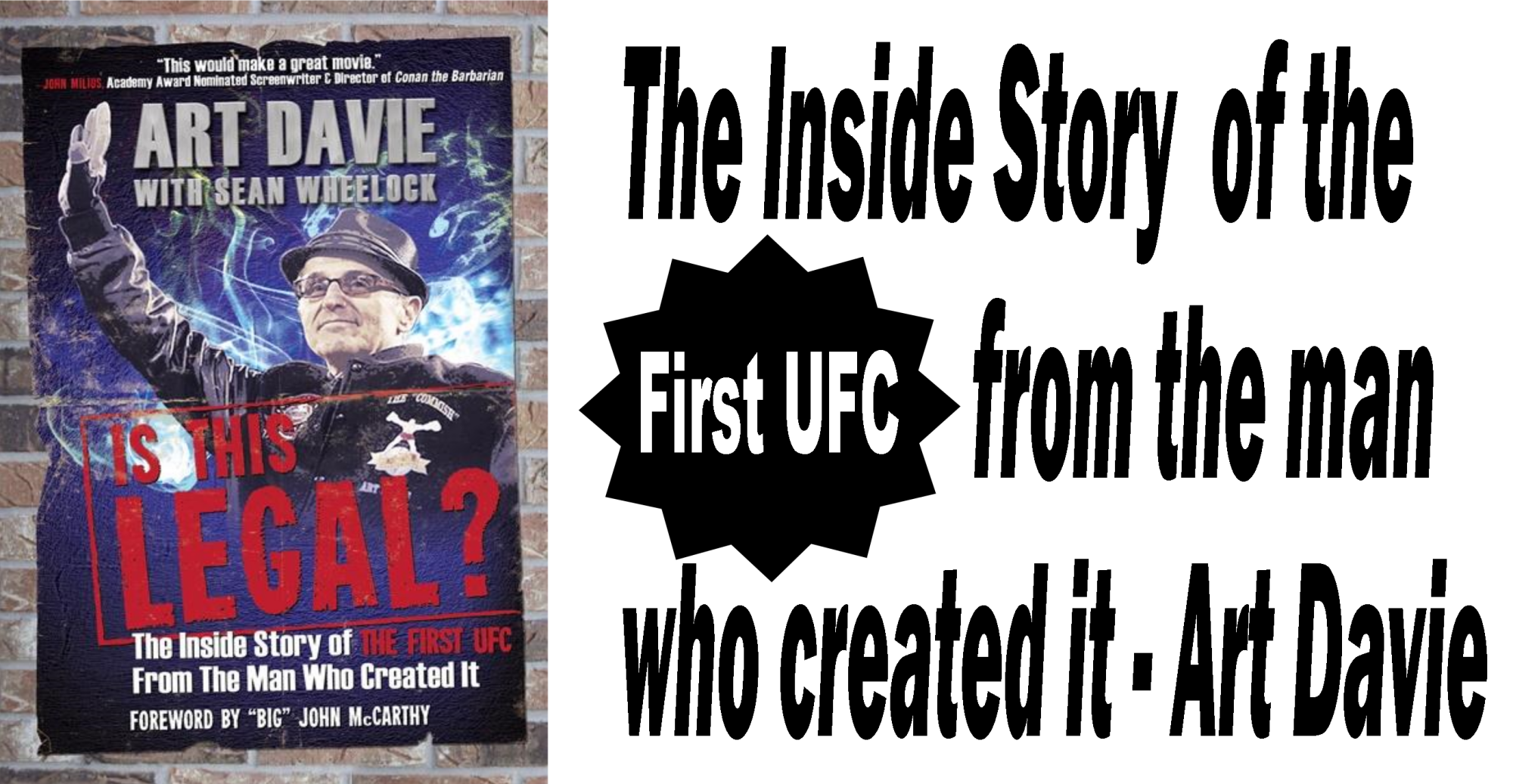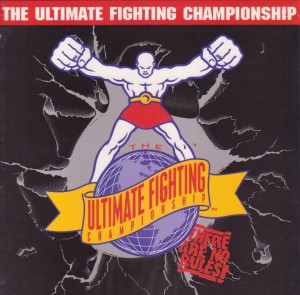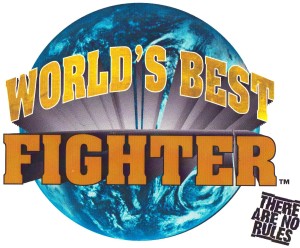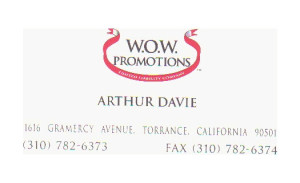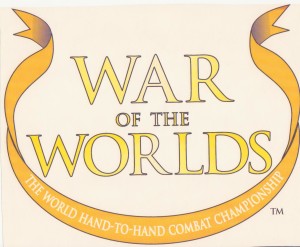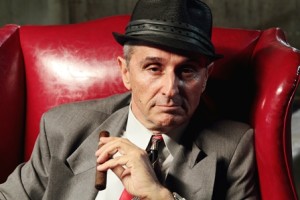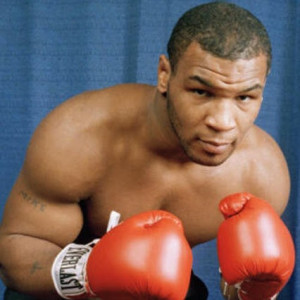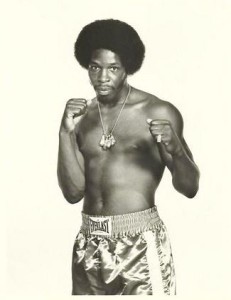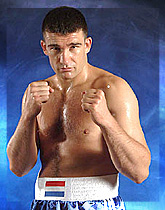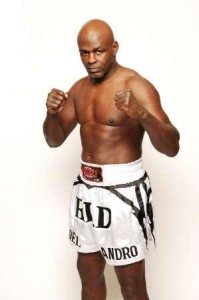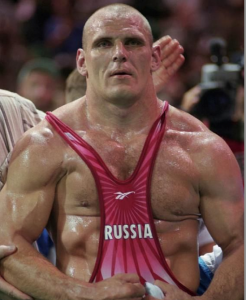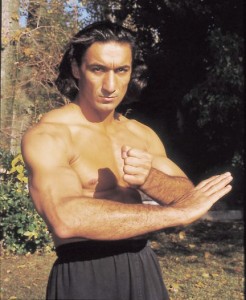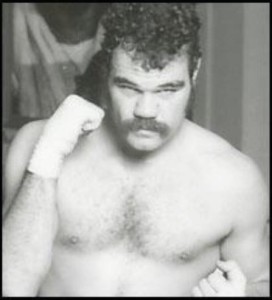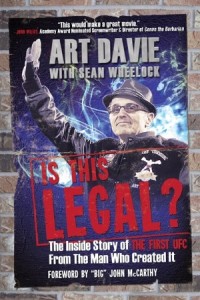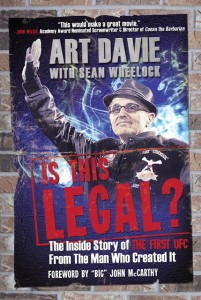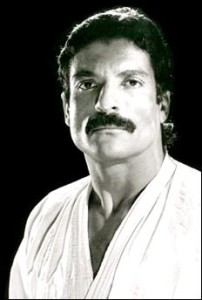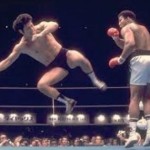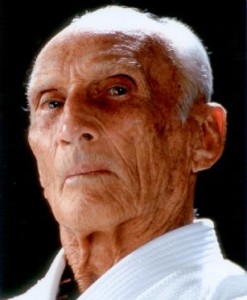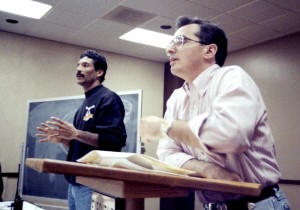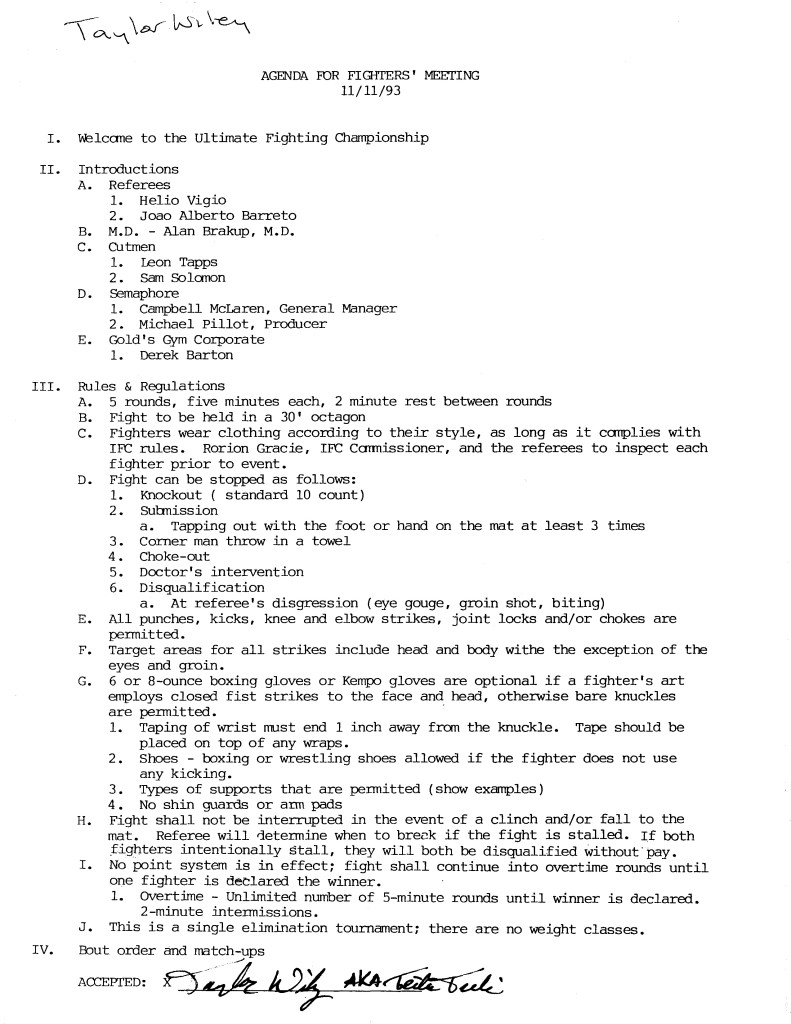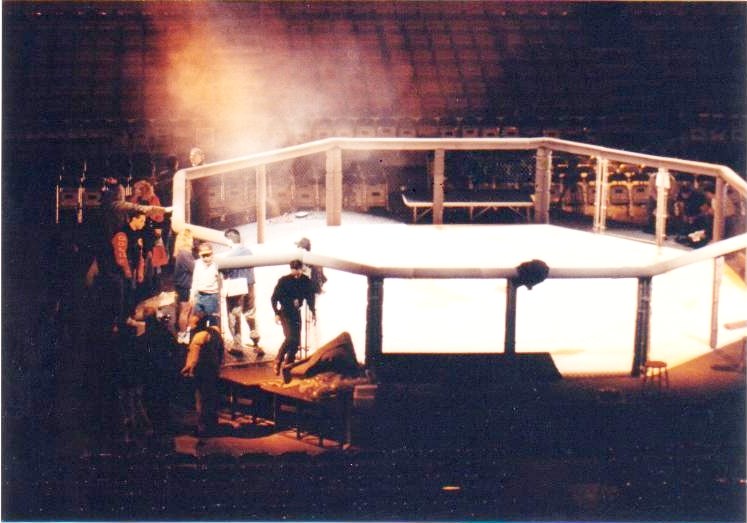 The True Story of the Octagon
The True Story of the Octagon
“There has been so much bogus information about the origins of the Octagon, that knew I had to address it in my book about the creation of the first UFC. Above is the first set-up of the Octagon at McNichols Sports Arena on Nov. 11, 1993. And, here from Chapter 9 of IS THIS LEGAL? is the true story of how the Octagon came to be.” – Art Davie
As for our fighting area, Rorion did have strong opinions. Repeatedly he had told me that he didn’t care what we used, as long as it wasn’t a boxing ring. Rorion had fought in them personally, and had seen them used in vale tudo fights in Brazil, including with his dad and his brother Rickson. In Rorion’s opinion, they just didn’t work when grappling was involved. And it was without question that grappling would be involved as far as Royce was concerned. Rorion felt that a boxing ring allowed a grounded fighter to slide under the ring ropes for a quick exit, or tie himself up in the ropes to avoid being taken down. I didn’t really care how this would affect Royce, but I did care about the flow of the fights. Rorion made a lot of sense. We needed brutal action,not stalling and escapes. Campbell bought into this logic when I relayed Rorion’s sentiments. “But what would we use then, wrestling mats?” he asked me.
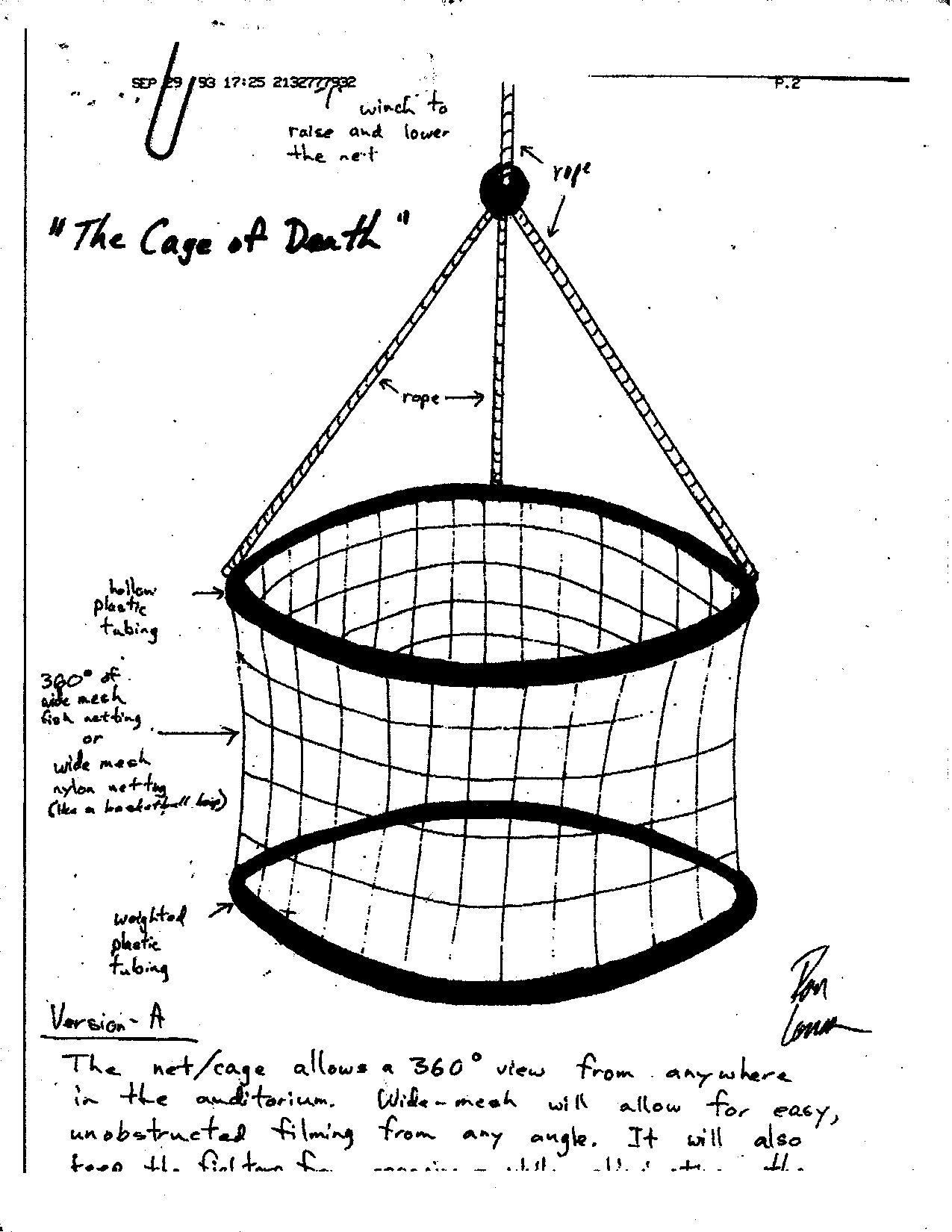 Inspired by Milius and all of his talk of spectacle and grandiosity, I’d been thinking about this quite a bit. Rorion and I had already spread word around the Gracie Academy that any ideas were welcome—no matter how unrealistic or outrageous. One of Rorion’s students proposed something he called “the Cage of Death.” It featured a mesh enclosure suspended from the ceiling, which would be dramatically lowered from the rafters to surround the fighting mat, and then locked into place. I thought this was pretty cool, and incredibly theatrical. The guy gave me his notes and a sketch. Seeing it on paper, I liked the Cage of Death even more. But it would require a lot of precise coordination and solid engineering that I wasn’t sure we could accomplish.
Inspired by Milius and all of his talk of spectacle and grandiosity, I’d been thinking about this quite a bit. Rorion and I had already spread word around the Gracie Academy that any ideas were welcome—no matter how unrealistic or outrageous. One of Rorion’s students proposed something he called “the Cage of Death.” It featured a mesh enclosure suspended from the ceiling, which would be dramatically lowered from the rafters to surround the fighting mat, and then locked into place. I thought this was pretty cool, and incredibly theatrical. The guy gave me his notes and a sketch. Seeing it on paper, I liked the Cage of Death even more. But it would require a lot of precise coordination and solid engineering that I wasn’t sure we could accomplish.
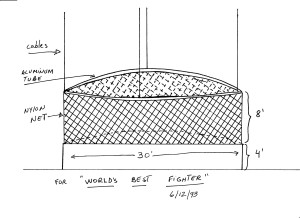 On my own, I came up with three ideas. The first was a circular grappling mat, which would be bordered on the outside by electrified copper flooring panels. My thought was that a fighter would be discouraged from fleeing or even backpedaling, as he would know that a small jolt of electricity was waiting for him. The shock would be nothing major; just a little tingle similar to what happens when a person touches an electrified fence. I floated this idea by Rorion, and he in turn mentioned it to one of his students who was a doctor. “Are you guys trying to kill someone?” was the M.D.’s terse reply. The doctor explained that if a sweaty fighter landed stomach first on the electrified panels, he could possibly suffer ventricular fibrillation—a rapid contraction of the heart—which could cause a heart attack or even sudden death. So I moved on. My second idea felt truly revolutionary to me, and I was curious to see if I’d found the answer. We’d build a huge Plexiglas box, open only on top and with a door created on one side. The fighters would have no way to escape the battle, and the view of the in-house and PPV television audiences would never be obstructed. With a look of disbelief, Rorion asked me about the flooring, and I told him that it would probably be Plexiglas as well. “And you think this would be a good idea for fighting on the ground, Arturo?”
On my own, I came up with three ideas. The first was a circular grappling mat, which would be bordered on the outside by electrified copper flooring panels. My thought was that a fighter would be discouraged from fleeing or even backpedaling, as he would know that a small jolt of electricity was waiting for him. The shock would be nothing major; just a little tingle similar to what happens when a person touches an electrified fence. I floated this idea by Rorion, and he in turn mentioned it to one of his students who was a doctor. “Are you guys trying to kill someone?” was the M.D.’s terse reply. The doctor explained that if a sweaty fighter landed stomach first on the electrified panels, he could possibly suffer ventricular fibrillation—a rapid contraction of the heart—which could cause a heart attack or even sudden death. So I moved on. My second idea felt truly revolutionary to me, and I was curious to see if I’d found the answer. We’d build a huge Plexiglas box, open only on top and with a door created on one side. The fighters would have no way to escape the battle, and the view of the in-house and PPV television audiences would never be obstructed. With a look of disbelief, Rorion asked me about the flooring, and I told him that it would probably be Plexiglas as well. “And you think this would be a good idea for fighting on the ground, Arturo?”
He, of course, had a valid point. It would be very uncomfortable, especially for Royce, who was just as offensive and effective fighting off of his back as he was on top of his opponent. Holding closed guard with a 220-pound man on top of you while lying on hard Plexiglas, was not a pleasant proposition. And how about my enormous sumo wrestler Teila Tuli potentially slamming someone down onto the floor? Plus, I started thinking back to my conversations with Pillot about the numerous bright lights required for the broadcast. Clear, shiny Plexiglas was going to look like the surface of the sun on TV, although I did love the thought of putting a camera below the fighters, and shooting upwards for a really unique view. My third idea also involved a grappling mat, but this time it would be surrounded by a moat, filled with water, and sharks or piranhas. Again, an incentive for both fighters to keep moving forward. It would be a gimmick, as we’d use sand sharks or lemon sharks, neither of which are particularly threatening when it comes to humans; or piranhas that would be well fed, thus making them about as dangerous to the submerged fighters as catfish. But what a gimmick it would be. My enthusiasm, though, quickly gave way to the cold, hard and unsexy world of logistics. We would have to transport all of those fish from who knows where to the venue. And we’d have to fill up the moat with water, adding a lot of time to the set up. How practical would this be, event after event? I didn’t even mention my sharks and piranhas concept to Rorion. At that point, I had nothing concrete for Campbell when we met at the Mondrian, other than a lot of Milius-inspired “think big” ideas.
Campbell also told me he had talked to Pillot about all of my ideas, concepts and theories regarding our fighting area. To make sure we were heard, I then drafted a fax with a list of bullet points for a designer to use in its creation. It was based on Rorion’s anti-boxing ring position, plus considerations from me about the canvas and the padding underneath. I also suggested in this fax that the fighting area should be at least 30 feet in diameter—six feet bigger than a standard world championship boxing ring. Pillot then gave my list, along with his TV production requirements, to two set designers in California he had worked with in the past: Greg Harrison and Jason Cusson. Pillot told them that we wanted it to look almost primitive, incorporating the feeling of ancient Pankration and the Roman Coliseum. Soon after, I was shown four preliminary design sketches that Harrison and Cusson had created. The first looked like a standard boxing ring, but instead of ropes, a wall of thick fencing surrounded the perimeter. The fence, which started on the floor, and extended a few feet above the canvas, was topped with barbed wire. In the four corners of the ring were lit torches for obvious dramatic effect.
The second sketch also featured what seemed like a boxing ring, but this one had an inner fighting area that was enclosed by a thick rope netting, similar to what would hang behind home plate at a baseball stadium. The netting was held in place by support poles anchored just outside the four corners of the ring. The third depicted the fighting area with an elevated circular mat. In essence, a raised platform. The mat sloped down to be surrounded by an inside circular walkway, with a circular chain link fence around the perimeter. The fourth and final sketch that I saw employed an octagon shape, enclosed by a chain link fence, and surrounded by an outer catwalk. It was elevated, just like a boxing ring, and had two entry gates placed on opposite sides, which could be locked shut. I immediately felt that this was our winner, as did Harrison, Cusson, and everyone at SEG.
“BTW, Campbell McLaren gives more credit to Jason Cusson than to Greg Harrison as the real architect of the Octagon. Below is a photo of Jason and what he wrote to me recently about his collaboration with Greg Harrison on the development of the Octagon.” – Art Davie
“Greg’s contribution was limited to being the go-between for me and SEG. Greg drew those pictures from my descriptions to him. I had been working with him producing his animation projects. He was busy with other projects but wanted to remain the point of information to keep a paycheck. In a recent interview, he couldn’t come up with the inspiration for the shape (all I knew about martial arts was Chuck Norris’ “The Octagon”), didn’t know who built the octagon, painted the canvas, or how the idea for chain link fence came about. The guy who did the interview told me he was a real tool about using his drawings, too. When it (the UFC) was almost shut down he DIRECTLY gave me full credit for 15 or so years. Now that it’s huge, he wants me to have none. I don’t know what happened in his life to make him so bitter and grasping. Too bad, we were quite close friends once.” – Jason Cusson
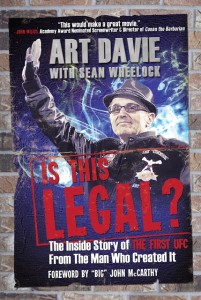 IS THIS LEGAL? MEDIA COVERAGE CONTINUES…
IS THIS LEGAL? MEDIA COVERAGE CONTINUES…